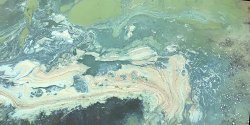Some types filamentous of cyanobacteria are capable of forming heterocytes and akinetes, which are specialized cell types.
Heterocytes contain an enzyme called nitrogenase, which allows these cyanobacteria to fix atmospheric molecular nitrogen. Heterocyte production tends to decrease as the amount of biologically available nitrogen in the environment increases. Akinetes are thick-walled resting (non-dividing) cells capable of surviving harsh environmental conditions; they possess an accumulation of the chemical compounds necessary for new growth once environmental conditions improve. Though many of the heterocyte-forming taxa also form akinetes, this is not always the case; in some taxa, heterocyte production is well-known, but the presence of akinetes has not been reported.
Select “heterocyte-forming” or “non-heterocyte-forming” below to continue to the next step of the visual guide. If you’re not sure how to identify these cell types, scroll further down this page for a more thorough description of what heterocytes and akinetes look like.
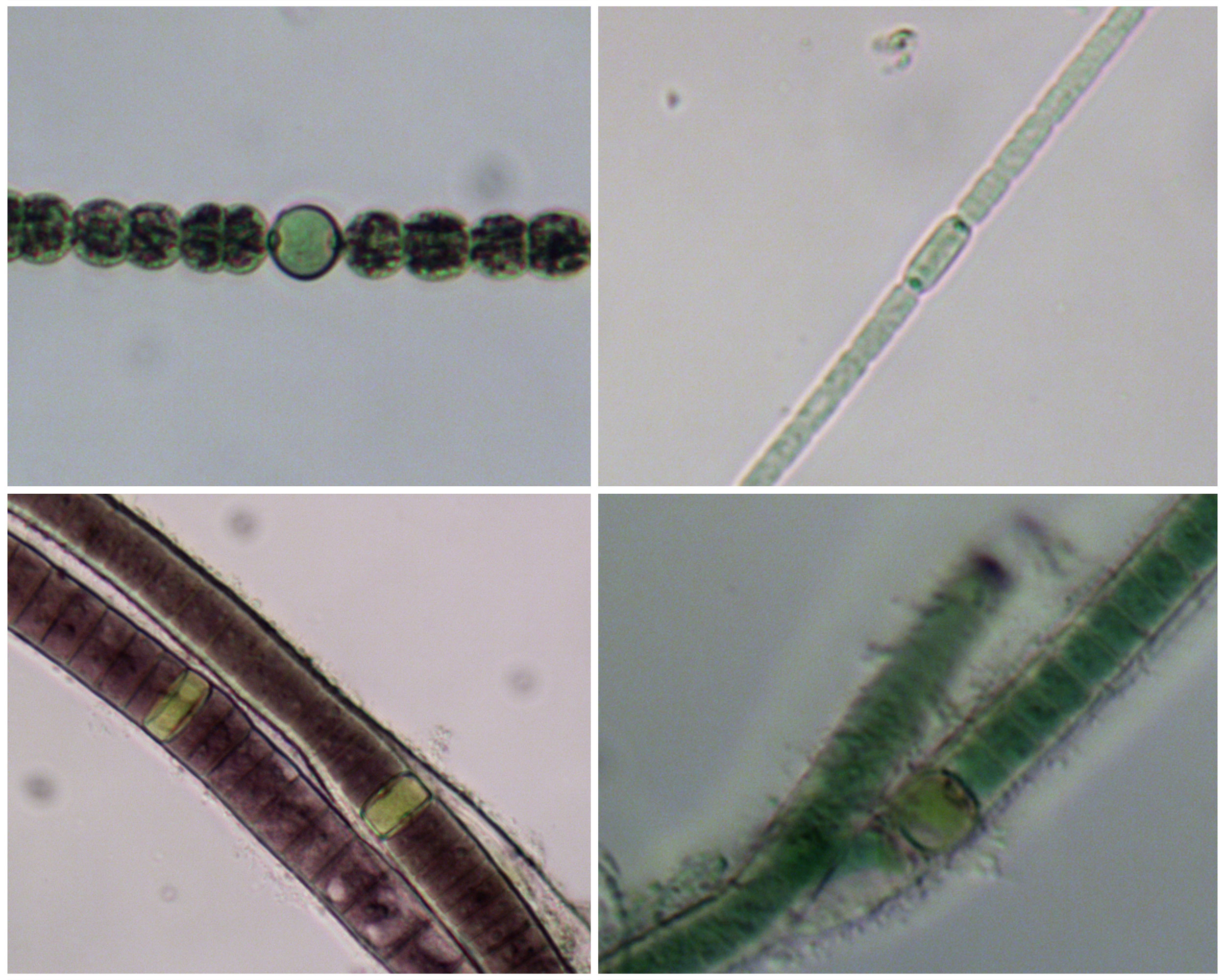 Heterocyte-Forming
Heterocyte-Forming
Heterocyte-forming (“heterocytous”) cyanobacteria are capable of forming heterocytes, and many can also form akinetes.
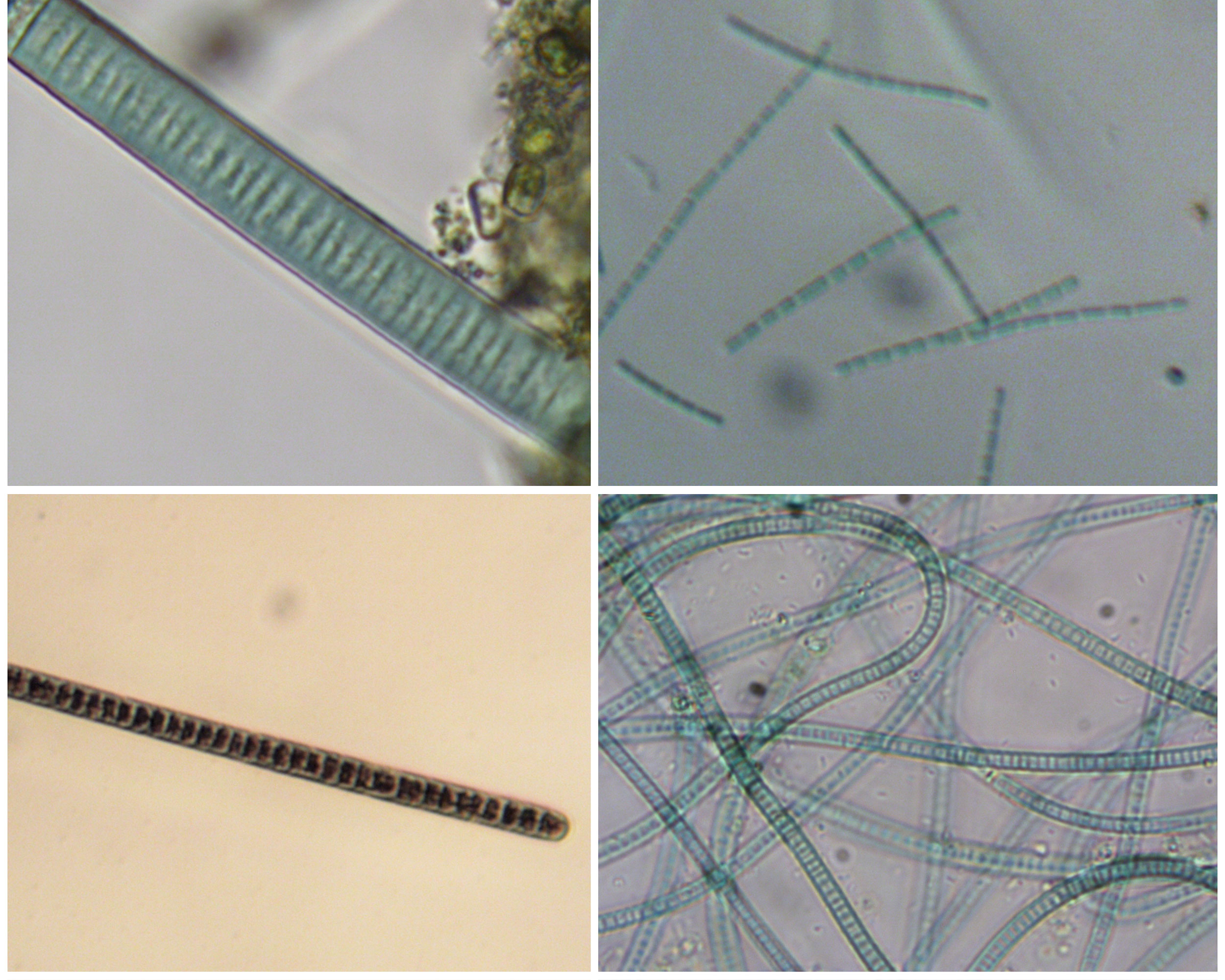 Non-Heterocyte-Forming
Non-Heterocyte-Forming
Non-heterocyte forming cyanobacteria are just what they sound like: they don’t form heterocytes (or akinetes)! Because heterocyte production can vary, the absence of heterocytes in any one trichome cannot be taken as a definite indicator that the trichome belongs to a non-heterocyte forming genus! For this reason (and others), it is best to observe as many trichomes as you can before deciding that you are truly looking at a cyanobacterium that cannot form heterocytes.
What do heterocytes look like?
- Possible shapes include spherical, cylindrical, flattened, and pointed
- Usually not much wider than vegetative cells, but could be a different length and/or shape (for instance, cylindrical heterocytes of Aphanizomenon may be noticeably longer than the vegetative cells in the trichome)
- Cell content pale and homogeneous
- Their thick cell walls may be visible as a distinct halo, ring, or border around the cell
- Heterocytes may be situated exclusively at trichome ends, or they can occur in the middle of the trichome
- Heterocytes can occur singly within the trichome, in pairs, or in short rows
- May develop directly adjacent to akinetes
What do akinetes look like?
- Commonly have a cylindrical or oval shape; can also be spherical
- May be much larger than the vegetative cells in the trichome, which is often the case for mature akinetes. Typically, they are at least a little bit bigger than the vegetative cells
- Cell content often has a granular appearance
- The outer layer of the cell wall–called an epispore–may be widened, textured, and/or yellowish to orange-brownish in color
- Might be solitary within the trichome, develop only near the trichome ends, or develop in rows of many akinetes between heterocytes
- May develop directly adjacent to heterocytes; sometimes heterocytes are flanked by an akinete on both ends
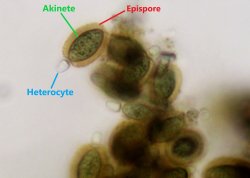
These granular, oval-shaped cells are akinetes that are no longer attached to trichomes of vegetative cells. The orange-brown layer surrounding the akinete is the epispore. Some of the akinetes have transparent, bluntly-pointed heterocytes attached.
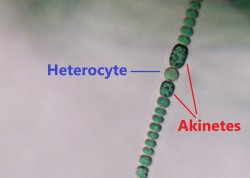
Here, akinetes develop on either side of a heterocyte, directly adjacent to it.
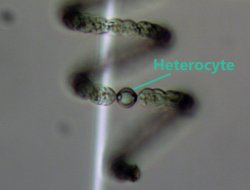
The thickened cell wall of this heterocyte is clearly visible as a ring-like border.
References
- Komárek, J. (2013). Cyanoprokaryota-3. Teil/Part 3: Heterocytous Genera (J. R. Johansen, Ed.). In B. Büdel, G. Gärtner, L. Krienitz, & M. Schagerl (Eds.), Süßwasserflora von Mitteleuropa (Vol. 19/3, pp. 7-65). Heidelberg, Germany: Springer Spektrum.
